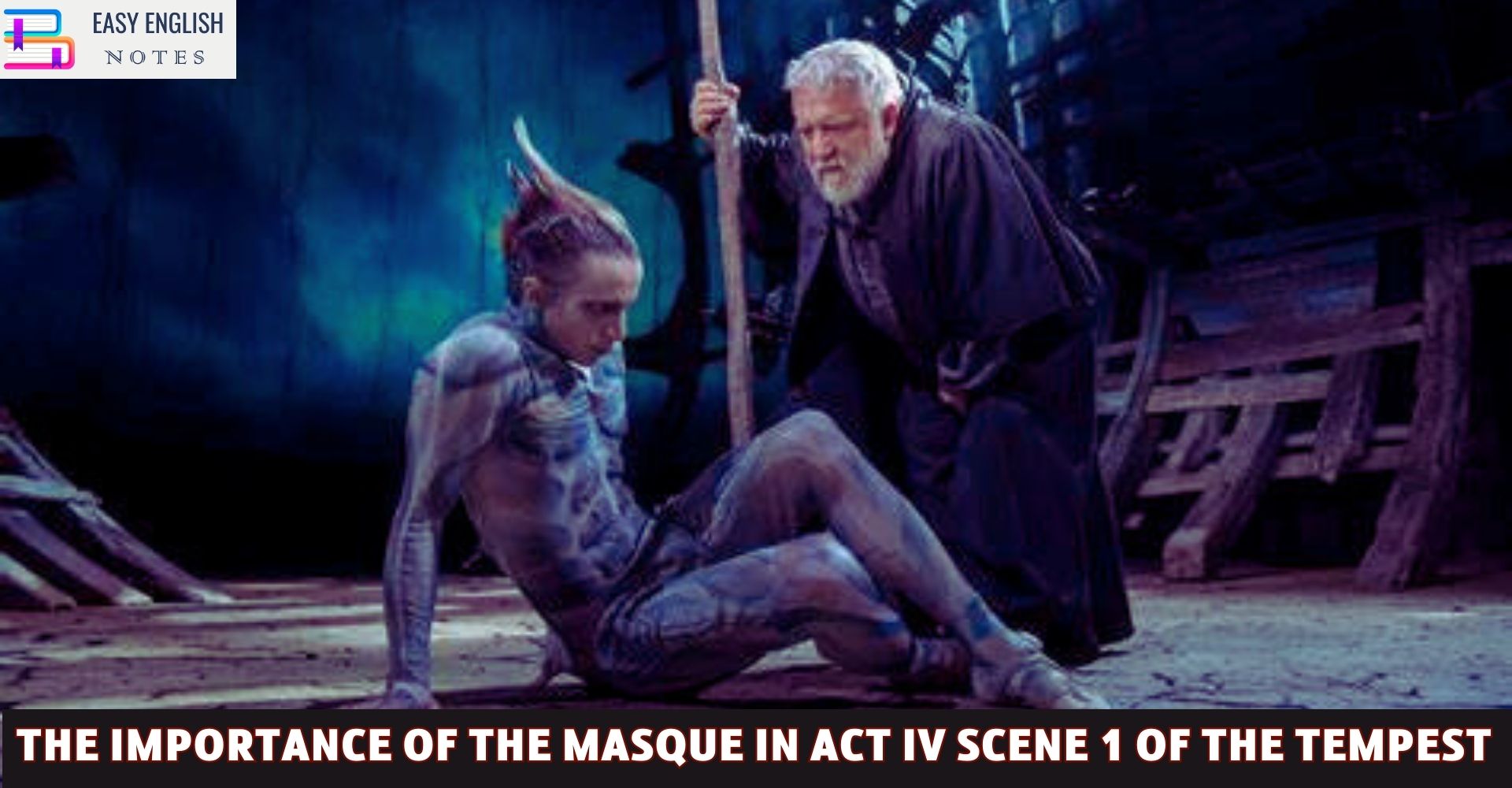Shakespeare’s The Tempest is a masterpiece that has been studied and analyzed for centuries. Act IV Scene 1 is a particularly captivating moment in the play as it features a masque, a form of entertainment that was popular in the Renaissance era. However, this masque is not just a piece of entertainment. It serves a deeper purpose and holds significant symbolism that sheds light on the themes and messages of the play. Unpacking the symbolism of the masque is crucial in understanding the play’s complex themes of power, illusion, and forgiveness. This scene is a prime example of Shakespeare’s skill in using symbolism to communicate his message to the audience. In this article, we will take a closer look at the importance of the masque in Act IV Scene 1 of The Tempest and delve into its underlying meanings. Join us as we explore the intricacies of this scene and discover how it contributes to the play’s overall impact.
The Masque in Act IV Scene 1 of The Tempest
The masque in Act IV Scene 1 of The Tempest is a pivotal moment in the play. It features a group of spirits who perform a dance for the betrothal of Ferdinand and Miranda. Masques were popular forms of entertainment in the Renaissance era, often featuring elaborate costumes, music, and dance. They were typically performed in royal courts and were intended to showcase the wealth and power of the host.
The historical context of masques in Shakespearean times
Masques were an important part of courtly entertainment during the Renaissance era. They were often used to celebrate important events such as weddings, coronations, and other significant occasions. Masques were typically performed by members of the court and were intended to showcase their wealth, power, and artistic talents. The masque in Act IV Scene 1 of The Tempest is no different, as it is performed by the spirits to celebrate the betrothal of Ferdinand and Miranda.
Symbolism in the Masque: Analysis of the characters and their costumes
The masque in Act IV Scene 1 of The Tempest is rich in symbolism. Each character’s costume represents a different element of nature, such as the sun, moon, and stars. The characters themselves are also symbolic, representing different aspects of the natural world. For example, Iris represents the rainbow, while Ceres represents agriculture and fertility. Juno, the queen of the gods, represents the power of the heavens.
The significance of music in the Masque
Music plays an important role in the masque in Act IV Scene 1 of The Tempest. The spirits sing and play instruments, adding to the spectacle of the performance. The music also serves to heighten the emotional impact of the scene, conveying the joy and celebration of Ferdinand and Miranda’s betrothal. Additionally, the music serves to illustrate the beauty and harmony of the natural world, which is a recurring theme in the play.
The Masque as a reflection of Prospero’s character
The masque in Act IV Scene 1 of The Tempest is also a reflection of Prospero’s character. Prospero is the one who orchestrates the masque, using his magic to create the costumes and music. This demonstrates his mastery over the natural world and his ability to control the actions of others. The masque also reveals Prospero’s desire for power and control, as he uses the performance to manipulate Ferdinand and Miranda’s emotions.
Also Read :
- Compare Hamlet with Macbeth, Othello and other Tragedies
- “The Pardoner’s Tale” is the finest tale of Chaucer
- Prologue to Canterbury Tales – (Short Ques & Ans)
- Confessional Poetry – Definition & meaning
The Masque as a tool for Prospero’s plan
The masque in Act IV Scene 1 of The Tempest is not just a piece of entertainment but is also a tool for Prospero’s plan. The performance is designed to distract Ferdinand and Miranda from their impending marriage and to test their love for each other. Prospero uses the masque to manipulate their emotions and to gauge their loyalty to each other. The masque is also a way for Prospero to show off his power and control, further asserting his dominance over the other characters.
The Masque as a commentary on colonialism and power dynamics
The masque in Act IV Scene 1 of The Tempest is also a commentary on colonialism and power dynamics. The characters in the masque represent different elements of the natural world, which can be seen as a metaphor for the colonization of the New World. The masque is also a reflection of the power dynamics between the colonizers and the colonized, with Prospero using his magic to control the other characters and assert his dominance over them.
The Masque’s impact on the play’s themes and motifs
The masque in Act IV Scene 1 of The Tempest has a significant impact on the play’s themes and motifs. It serves as a reflection of Prospero’s character and his desire for power and control. The masque is also a tool for Prospero’s plan, allowing him to manipulate the emotions of the other characters. Additionally, the masque is a commentary on colonialism and power dynamics, highlighting the issues of control and dominance that were prevalent in Shakespeare’s time.
Conclusion: The enduring relevance of Shakespeare’s use of symbolism in literature
In conclusion, the masque in Act IV Scene 1 of The Tempest is a pivotal moment in the play that holds significant symbolism. It serves as a reflection of Prospero’s character, a tool for his plan, and a commentary on colonialism and power dynamics. The masque is a testament to Shakespeare’s skill in using symbolism to convey complex themes and messages to his audience. The enduring relevance of Shakespeare’s use of symbolism in literature is a testament to the power of his writing and his ability to captivate audiences for centuries to come.
PLEASE HELP ME TO REACH 1000 SUBSCRIBER ON MY COOKING YT CHANNEL (CLICK HERE)











